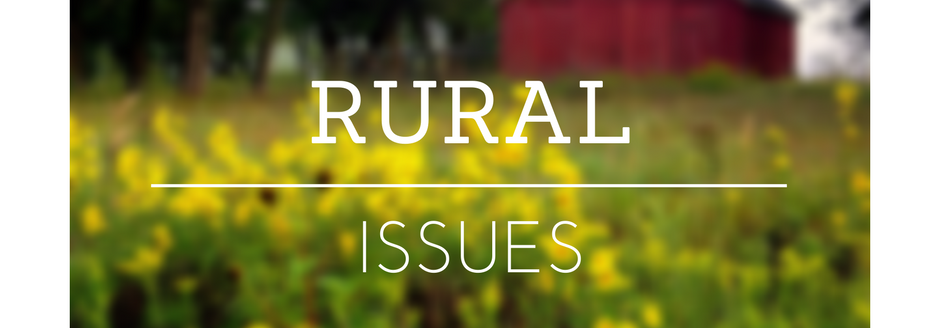On every country road there is at least one person who is known for his livestock jumping the fence and grazing in ditches, standing on the road or trespassing onto the neighbor’s property.
Whether that person is you or your neighbor, who does the law say is liable for damages those animals inflict? Garrett Reed, attorney at McAfee & Taft in Oklahoma City, Oklahoma, specializes in agricultural litigation and recently spoke at the Central Oklahoma Cattle Conference in Stillwater, Oklahoma, on liability for straying animals.
Reed said when livestock stray, the first question to ask is if anyone sustained any injuries and was there any property damage? Then liability, if any, has to be determined. He said the first aspect of straying animal liability is that there are two main types of jurisdictions when it comes to fencing: fenced-in and fenced-out.
“Fenced-out is what we typically think of when we think of open range,” Reed said. “In fenced-out states, you have a duty to fence out other people’s livestock if you don’t want them coming onto your property. But Oklahoma and many other jurisdictions are fenced-in states, where you have to fence for your livestock.”
Some other examples of fenced-in states are Kansas, Nebraska Arkansas and Missouri. Other states, such as Texas, Colorado, New Mexico, Wyoming, and Montana are considered fenced-out, but many counties have held elections to change the policy to become closed-range counties. Check with your state and county to determine the rules for particular areas.
As far as Oklahoma’s laws, Reed cited title 4 of section 98 of the Oklahoma statute, which states, “All domestic animals shall be restrained by the owner thereof at all times and seasons on the year from running at large in the State of Oklahoma. Damages caused by the domestic animals trespassing upon lands of another shall be recovered in a manner provided by law.”
“This creates an affirmative duty to keep animals fenced in,” Reed said. “Failure to do so results in trespass and may subject the owner to liability for damages caused by the trespass. That statute imposes what we call strict liability. In a simple sense, strict liability means you are liable simply for the fact that it happened.”
Reed went on to discuss real-life cases and how they played out in Oklahoma courts. First, he brought up the 1972 case of Shuck v. Cook. A bull got out on a highway and was hit by a vehicle. The driver sued the owner of the bull and alleged that the owner’s failure to keep the bull within a fence was a violation of title 4, section 98.
“The court looked back at when the statute was passed and all the surrounding discussion to see if it applied here,” Reed explained. “They said no, the landowner wasn’t liable for those damages under that statute, because motorists traveling on the highways are not members of the class the statute was designed to protect. It was designed to protect neighboring landowners, farmers and ranchers. They went on to say the injuries suffered by that driver was not the kind of injury that the statute was designed to prevent. It was designed to prevent your wheat crop from being eaten by a field of yearlings or your corn crop from being trampled.”
In Carver v. Ford in 1979, a heifer that was being boarded on neighbor’s property escaped. The property owner was injured trying to catch the heifer.
“The injured property owner sued the owner of the heifer for strict liability based on section 98, saying the mere fact that your heifer got out of your stall and I was injured, means you’re liable,” Reed said. “The Oklahoma Supreme Court said no, this does not cover personal injuries caused by straying animals. Section 98 is not designed to give the plaintiff a basis for personal injuries without negligence or intentional trespass.”
Extenuating circumstances
Are there cases where livestock owners can be liable if their animal is hit on the road? Reed said yes, under certain circumstances.
“In that case, you would not be strictly liable,” he explained. “The person suing you has to prove more than the mere fact that the animal escaped in order to recover damages from you.”
The court says, “A(n) owner of an escaping animal would not be liable, if without his fault, the animal escapes enclosure such as generally required to restrain livestock.”
“Unless the owner acted intentionally, meaning you purposefully left that gate open or you acted negligently and did not check to make sure the gate was shut, then you’re not responsible for those damages,” Reed explained.
Reed brought up was Kelley vs. Barnett in 1995 to illustrate one of these extenuating circumstances. This case involved a horse that escaped out of its pasture and was hit by a car. The car was destroyed and the plaintiff suffered injuries. The plaintiff showed evidence at the trial that the fence was in disrepair for a long period of time and witnesses testify that the defendant’s horse escaped on multiple occasions previously. The jury sided with the defendant, but the plaintiff appealed it to the Oklahoma Supreme Court and justices stated there was sufficient evidence to give the case a new trial and for the jury to reconsider the evidence.
Sign up for HPJ Insights
Our weekly newsletter delivers the latest news straight to your inbox including breaking news, our exclusive columns and much more.
“This evidence was sufficient to an inference that when the plaintiff struck the horse, the horse was there because it escaped by reason of defendant’s negligently maintained fence,” Reed said.
When it comes to livestock getting out and trespassing on other agricultural land, Reed said there are several steps for landowners to take.
“Practically speaking, I think we’ve all been there,” he said. “You call your neighbor and tell him they’re out. Then later that evening he comes and picks them up. Now, realistically, that’s the practical thing to do. And from a legal point of view, that’s the first step.”
However, if a landowner is in that situation, but livestock are on the property for an extended period of time and the owner still does not retrieve them, Reed said Oklahoma statutes actually provide another mechanism for landowners to seek damages from those livestock being on a property.
“It’s called distraint, which means to seize or take possession of those livestock,” he said. “Under these statutes, a landowner can essentially take possession of those livestock, but within 48 hours they have to notify the owner of the livestock.”
If the owner refuses to satisfy those damages caused by the cattle, the county sheriff is authorized to assess the damages and come up with an amount he believes will cover it. If the landowner still refuses to pay the total amount, then the sheriff can proceed to sell those cattle and use the funds to apply to the property owner’s damage and any excess funds go back to the owner of the livestock.
“While this is in place, I’ve never seen this happen,” he said. “Why? Because people are usually pretty reasonable and when you tell
them their cattle are out they usually come and get them. I give this to show there is a process out there, but most of the time there is
a practical solution that you can reach before you get to this process.”
Reed said sometimes it comes to a point when landowners have to draft a letter explaining what could happen if the livestock owner
does not get the cattle and most of the time the livestock owner acts quickly after notification.
“Practically speaking, what does all this mean? Go check your fences, gates and cattle guards. It’s the most cost-efficient way to prevent these things from happening. After a big rain, go check the water gap. After an ice storm, go check to see if limbs have fallen on your fence. And maybe consider if one of your animals is always wanting to get out, maybe you need to move them to a different pasture or take them to the sale barn. Finally, remember to keep in mind that good fences make good neighbors and as cattle get out on both sides, have grace with one another because we know it happens sometimes.”
Lacey Vilhauer can be reached at 620-227-1871 or [email protected].




